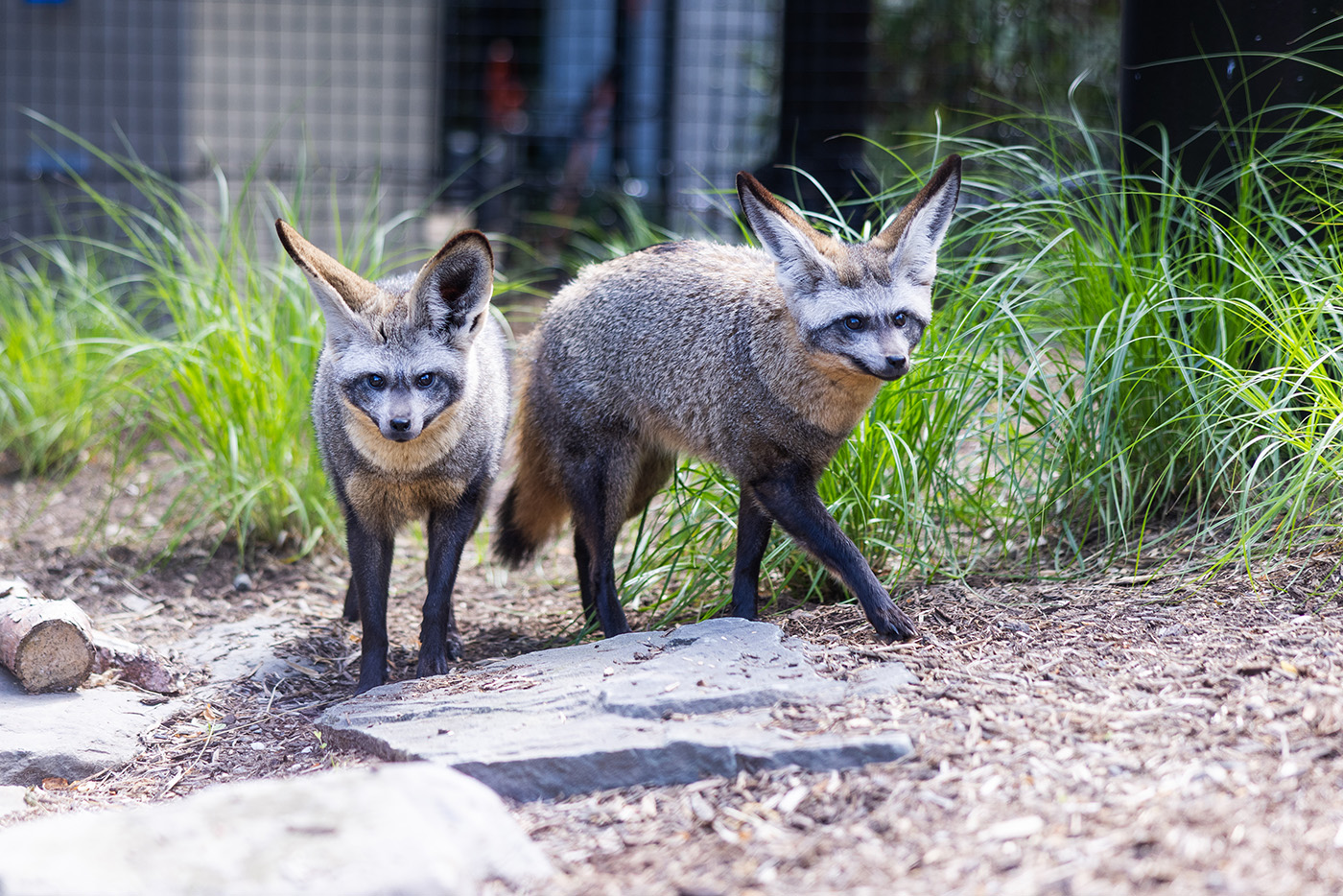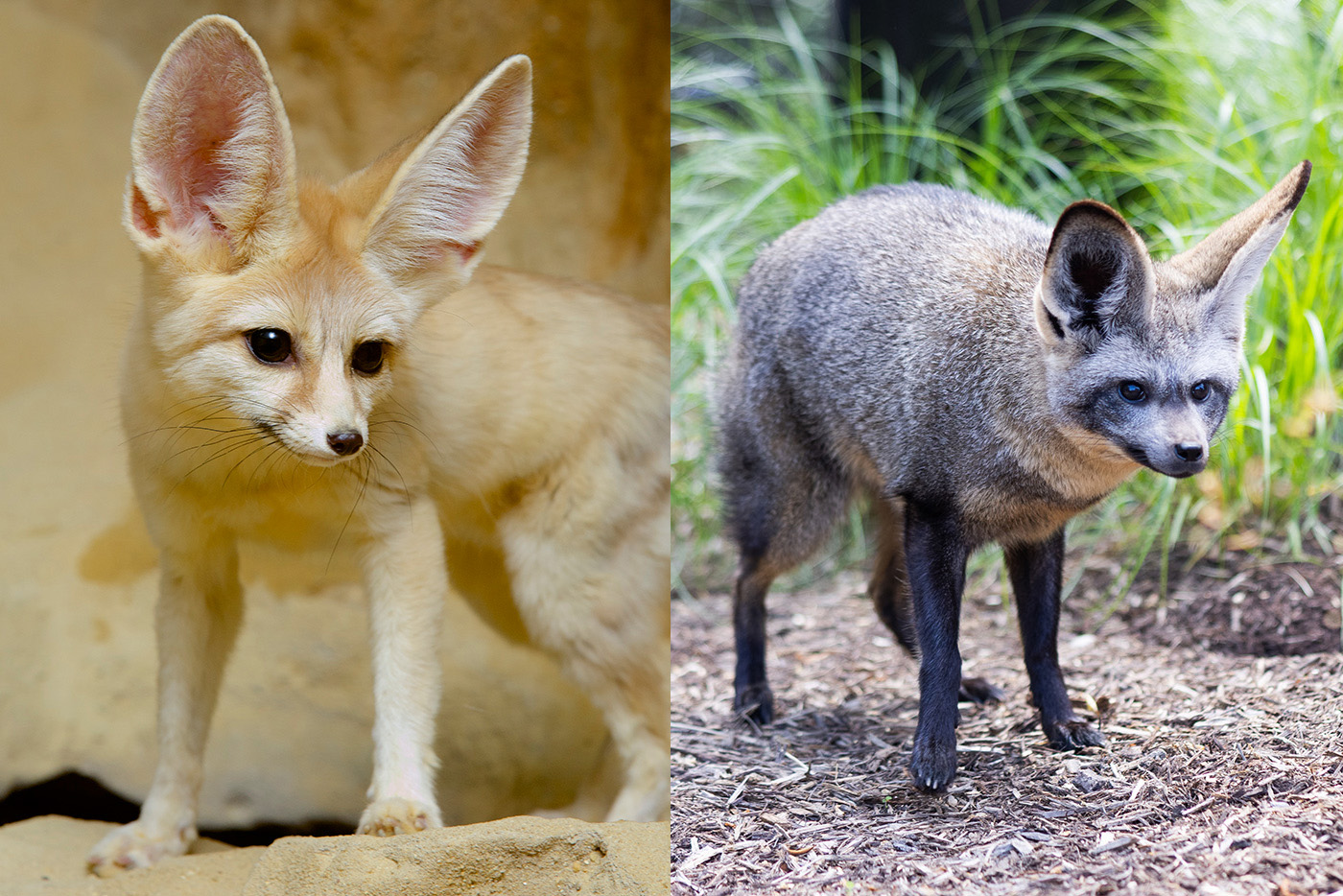Meet the Bat-Eared Fox, an Unusual Animal That Can Hear Insects Burrowing Underground

This peculiar-looking canine lives in the open savannas and shrublands of Africa, where it burrows underground and uses its exceptional hearing to hunt for termites and beetles.
What does a bat-eared fox look like?
As members of the Canidae family, these animals resemble small, thin dogs. Notably, they have exceptionally large ears, making them look almost like giant bats.
Their bodies are covered in a silvery-brown fur coat, with a distinctive raccoon-like mask covering their eyes, and black lower legs, feet, and tail tips. They usually weigh between 7 and 12 pounds, similar in size to a large house cat.

Smithsonian/Roshan Patel
Where do bat-eared foxes live?
Bat-eared foxes are found in two distinct subpopulations in eastern and southern Africa. The animals are adapted to live in the grasslands and savannas of these regions, where wide-open vistas make it easy for them to spot predators and hunt for prey.
These foxes are prolific diggers, excavating large dens and burrows with the aid of long claws on their forefeet. The dens serve as a shelter and a place to raise their young. The foxes typically sleep in these dens during the daytime and emerge around twilight, although this can vary based on the activity level of their preferred prey.
Bat-eared foxes can have several large dens in their territory. Multiple entrances and exits in each den help them slip by predators, including jackals, eagles, and hyenas.
What do bat-eared foxes eat?
Primarily insects! Bat-eared foxes are the only member of the dog family that specializes in eating insects. Around 90 percent of their diet in the wild is made up of insects, particularly the harvester termite.
The remaining part of their diet is just about anything else they can find — fruits, berries, seeds, lizards, eggs, rodents, grasshoppers, beetles, scorpions, crickets, and even some species of fungi.
Bat eared foxes have the most teeth of any placental mammal — 46 to 50 in total — which scientists believe is an adaptation to help them crunch up insects.
My what big ears you have!

Smithsonian/Roshan Patel
Bat eared foxes get their name from their ears—and it’s easy to see why. Their ears can reach 5 inches (13 centimeters) long, which helps explain their incredibly good hearing.
Their hearing is so strong they can pick up on beetles and termites burrowing underground.
Their ears also help them regulate heat, a handy adaptation for life on the African savanna. By pumping blood through their ears, they can cool themselves off when the weather gets too hot.
Are bat-eared foxes social?

Smithsonian/Roshan Patel
Yes. Bat-eared foxes live in small groups, usually made up of a mated pair and their young. These groups cooperate for survival by hunting together, grooming each other, defending territory, and sleeping in the same burrow.
Some fox species, like the red fox, are solitary. However, bat-eared foxes usually prefer to live together. Scientists think the relative abundance of their insect prey means the foxes are rarely in direct competition for food, which enables them to cooperate for survival instead of fighting each other.
In fact, one of their preferred feeding methods is more useful in a group than alone. An individual will dig into the side of a termite mound, and as soon as the mound breaks open, the entire group will quickly feed upon the thousands of insects that pour out before they can scuttle back into the ground.
Big ears run in the family
In the wild, bat-eared foxes are often found living in family groups. Males and females are usually monogamous, and both parents care for and raise their young.
Females give birth to a litter of 3-6 pups. Male bat-eared foxes are dedicated dads and play a huge rule in the early parental care for the kits. This allows the female to focus on eating enough food to nurse her young.
At about 8 to 12 days old, the pups are ready to start exploring outside the den. Both parents teach the youngsters which prey to eat, how to socially groom each other, and how to avoid predators.
Pups are fully grown by the time they reach six months old. At this point, they separate from their parents and start looking to form pairs of their own.
Fun facts about bat-eared foxes
- Bat-eared foxes have a special bone formation on the lower part of their jaw that anchors their chewing muscles. This allows them to chew rapidly – more than 3 times per second.
- These animals hang out around large herbivores, like zebras, wildebeest, and water buffalo. Why? Because bat eared foxes love to snack on dung beetles, an insect whose life cycles are closely interconnected with herbivore feces.
- Bat-eared foxes can rotate each ear independently, which helps them pinpoint the source and direction of a sound.
Is a bat-eared fox the same thing as a fennec fox?

Smithsonian/Clyde Nishimura & Roshan Patel
Nope. They might share some adaptations, but fennec foxes are adapted to survive in the sandy Sahara Desert, whereas bat-eared foxes are specialized for life in the grasslands.
Physically, bat-eared foxes are larger, heavier and have dark-colored fur. Fennec foxes have sandy-colored coats and are quite small — in fact, they’re the smallest species of fox in the world.
Are bat-eared foxes endangered?

Smithsonian/Roshan Patel
As bat-eared foxes are fairly common and widespread in their native habitat, the International Union for the Conservation of Nature does not consider to be endangered.
However, populations may be in decline in parts of their range, as changing land use patterns are having an impact on countless African grassland species. They are also hunted for their pelts and killed by farmers who mistakenly believe the creatures are a threat to their livestock.
How does the Smithsonian care for bat-eared foxes?
The Smithsonian's National Zoo is home to two bat-eared foxes: Lando, a male, and Ziggy, a female. Their habitat is located at the Great Cats exhibit, which showcases some of the top predators on the planet.
Interested in learning more about bat-eared foxes? Swing by the Lion/Tiger Keeper Chat, held daily at 11 a.m., to hear how the Zoo cares for this amazing and adorable species.
Related Species:
